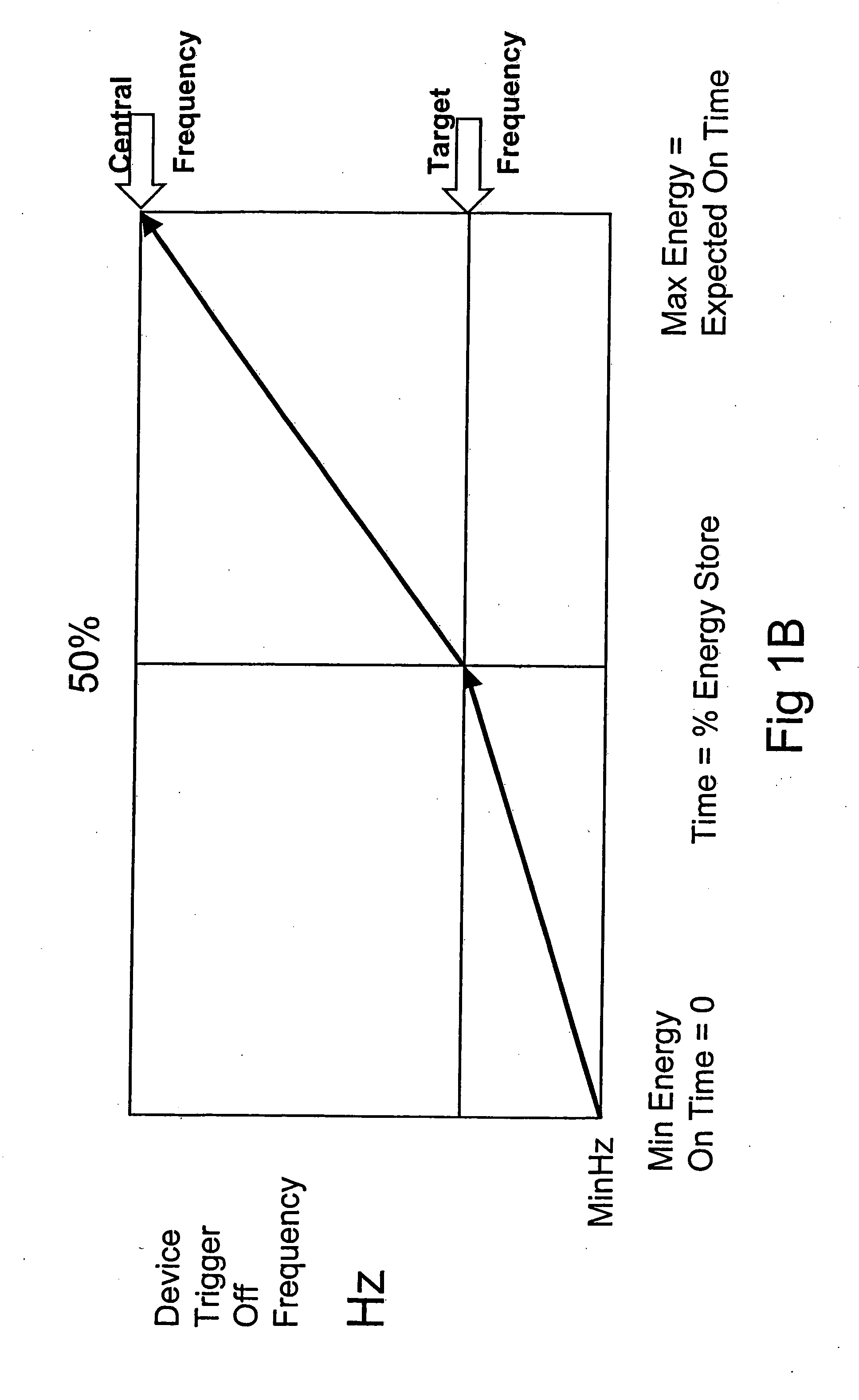Grid responsive control device
a control device and grid technology, applied in the direction of electric devices, process and machine control, instruments, etc., can solve the problems of increasing the frequency of ac power systems, complex reliability of power grids, and enormous technical challenges, and achieve the effect of severe stressing the grid
- Summary
- Abstract
- Description
- Claims
- Application Information
AI Technical Summary
Benefits of technology
Problems solved by technology
Method used
Image
Examples
Embodiment Construction
[0123]Specific embodiments of the present invention will now be described in order to aid in the understanding of the present invention.
[0124]The control device of the present invention is applicable to energy storage loads on a grid, which consume intermittent or variable energy.
[0125]The control device requires two main inputs, the first is a frequency of the grid, or another parameter representative of the balance between power generation and power requirement, and the second some physical variable associated with the energy storage load. Generally, the primary function of the load is to maintain the physical variable within specified control limits.
[0126]The loads will generally operate on a duty cycle of some kind, usually with a period in which the load is on and with a period in which the load is off. Thus, a duty cycle of 50% means that the load will be on and off for an equal amount of time. Specific loads of this kind to which the present invention are applicable include s...
PUM
 Login to View More
Login to View More Abstract
Description
Claims
Application Information
 Login to View More
Login to View More - R&D
- Intellectual Property
- Life Sciences
- Materials
- Tech Scout
- Unparalleled Data Quality
- Higher Quality Content
- 60% Fewer Hallucinations
Browse by: Latest US Patents, China's latest patents, Technical Efficacy Thesaurus, Application Domain, Technology Topic, Popular Technical Reports.
© 2025 PatSnap. All rights reserved.Legal|Privacy policy|Modern Slavery Act Transparency Statement|Sitemap|About US| Contact US: help@patsnap.com



